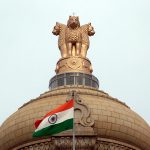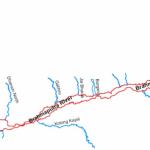- Families in rural areas often spend a lot of time every day collecting firewood, getting water and grazing their cattle.
- Even though they do not earn any money from these activities they have to do them for the household. The family needs to spend time doing this as they are not able to survive on the little money they earn.
- Nearly two-fifth of all rural families are agricultural labourers in our country.
- Not being able to earn money throughout the year forces people in many rural areas to travel long distances in search of work. This travel, or migration, takes place during particular seasons.
On being in Debt
- Very often farmers need to borrow money to purchase basic things like seeds, fertilisers and pesticides.
- Often they borrow this money from moneylenders.
- If the seeds are not of good quality or pests attack their crop there can be a major crop failure.
- The crops can also be ruined if the monsoon does not bring enough rain.
- When this happens farmers sometimes are unable to pay back their loans. And, for the family to survive, they may even have to borrow more money.
- Soon the loan becomes so large that no matter what they earn, they are unable to repay.
- This is when we can say they are caught in debt.
- In recent years this has become a major cause of distress among farmers. In some areas this has also resulted in many farmers committing suicide.
Agricultural Labourers and Farmers in India
- In India nearly two out of every five rural families are agricultural labourer families.
- All of them depend on the work they do on other people’s fields to earn a living.
- Many of them are landless and others may own very small plots of land.
- In the case of small farmers, their land is barely enough to meet their needs. In India 80 per cent of farmers belong to this group.
- Only 20 per cent of India’s farmers are large farmers who cultivate most of the land in the villages. A large part of their produce is sold in the market. Many of them have started other businesses such as shops, moneylending, trading, small factories etc.
- Apart from farming, many people in rural areas depend upon collection from the forest, animal husbandry, dairy produce, fishing etc
- Collecting mahua, tendu leaves, honey, to be sold to traders, is an important source of additional income.
- Similarly selling milk to the village cooperative society or taking milk to the nearby town may be the main source of livelihood for some families.
- In the coastal areas, we find fishing villages.
Rural Livelihoods
- People in rural areas earn their living in various ways.
- Some work on farms while others earn their living on nonfarm activities.
- Working on farms involves operations such as reparing the land, sowing, weeding and harvesting of crops.
- We depend on nature for the growth of these crops.
- Hence life revolves around certain seasons.
- People are busy during sowing and harvesting and less so at other times.
- Rural people in different regions of the country grow different crops.
- However, we do find similarities in their life situations and in the problems that they face.
- How people are able to survive or earn will depend upon the land that they cultivate. Many depend on these lands for work as labourers.
- Most farmers grow crops both for their own requirements and also to sell in the market. Some have to sell to traders from whom they have borrowed money.
- For their survival, many families need to borrow money for their work or when no work is available.
- There are some families in rural areas which thrive on large acres of lands, business and other activities.
- However, most small farmers, agricultural labourers, fishing families, crafts persons in the villages do not find enough work to keep them employed throughout the year.











